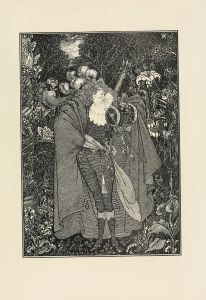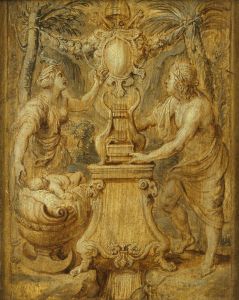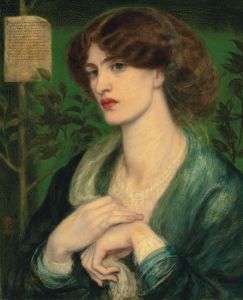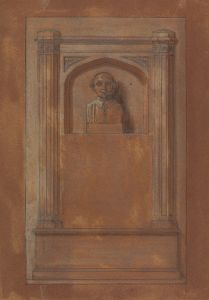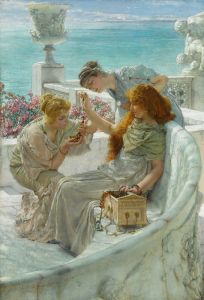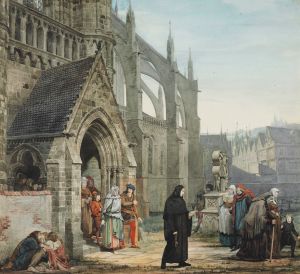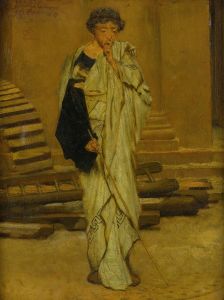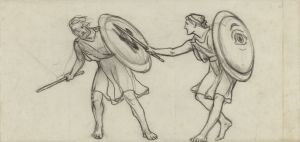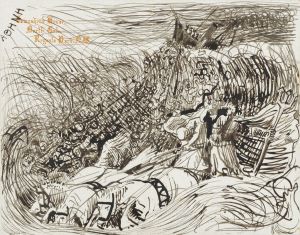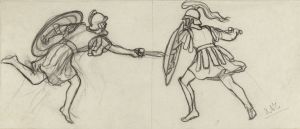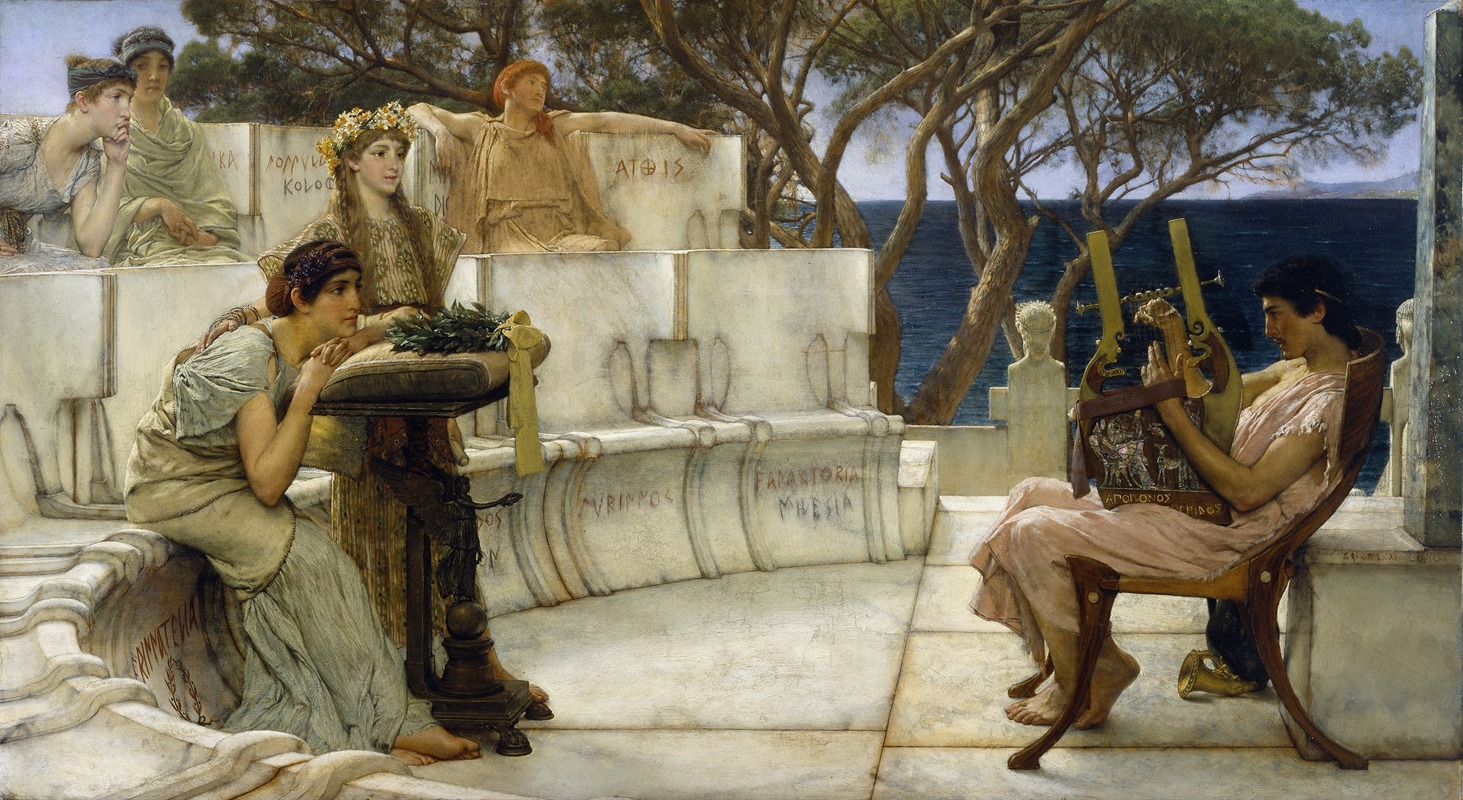
Sappho and Alcaeus
A hand-painted replica of Lawrence Alma-Tadema’s masterpiece Sappho and Alcaeus, meticulously crafted by professional artists to capture the true essence of the original. Each piece is created with museum-quality canvas and rare mineral pigments, carefully painted by experienced artists with delicate brushstrokes and rich, layered colors to perfectly recreate the texture of the original artwork. Unlike machine-printed reproductions, this hand-painted version brings the painting to life, infused with the artist’s emotions and skill in every stroke. Whether for personal collection or home decoration, it instantly elevates the artistic atmosphere of any space.
"Sappho and Alcaeus" is a painting by the Dutch-born British artist Lawrence Alma-Tadema, completed in 1881. Alma-Tadema is renowned for his depictions of the luxury and decadence of the Roman Empire, but this particular work focuses on an earlier period in ancient Greek history.
The painting illustrates a scene featuring the famous ancient Greek poets Sappho and Alcaeus. Sappho, known for her lyric poetry, was a native of the island of Lesbos and is often considered one of the greatest poets of antiquity. Alcaeus, also from Lesbos, was a contemporary of Sappho and is known for his political and personal poetry.
In "Sappho and Alcaeus," Alma-Tadema captures a moment where Alcaeus is playing a lyre and singing, while Sappho listens intently. The setting is a classical Greek interior, with marble columns and a view of the sea, which is typical of Alma-Tadema's attention to historical detail and architectural accuracy. The painting reflects Alma-Tadema's fascination with the ancient world and his skill in creating a sense of time and place.
The composition of the painting is carefully arranged to draw the viewer's eye to the interaction between the two poets. Sappho is seated, her posture and expression suggesting deep engagement with Alcaeus's performance. Alcaeus stands, his body turned towards Sappho, emphasizing the connection between the two figures. The use of light and shadow in the painting enhances the intimate atmosphere of the scene.
Alma-Tadema's meticulous attention to detail is evident in the depiction of the clothing, musical instruments, and architectural elements. The artist's use of color and texture adds to the realism and vibrancy of the scene. The painting is a testament to Alma-Tadema's ability to bring the ancient world to life through his art.
"Sappho and Alcaeus" is part of the collection of the Walters Art Museum in Baltimore, Maryland. The painting is a significant example of Alma-Tadema's work and is appreciated for its historical accuracy, artistic composition, and the way it captures the spirit of ancient Greek culture.
Lawrence Alma-Tadema's works, including "Sappho and Alcaeus," continue to be celebrated for their beauty and historical interest. His paintings offer a window into the past, allowing modern viewers to appreciate the art, culture, and daily life of ancient civilizations.







